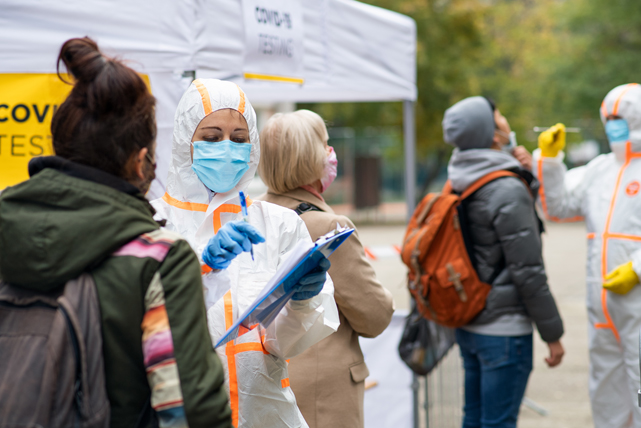Socio-Spatial Diffusion of COVID-19 in Germany (CoDiff)
Research department: Economy and Civil Society
Project Leader within IRS: Dr. Andreas Kuebart
Funding Organization: German Research Foundation
Duration: 02/2022 - 01/2023
The COVID-19 pandemic, like other pandemics before it, follows a temporal pattern of acceleration and deceleration in terms of case incidences among populations and regions. Over the course of a pandemic, a temporal pattern emerges that resembles logistic curves or waves. While pandemic waves are often analyzed on a national scale, they are typically not evenly distributed within territories.
Our project aimed to develop an understanding of how the COVID-19 pandemic unfolded in Germany over time and space. By analyzing the trajectories of the COVID-19 pandemic in Germany from a process perspective, we sought to detect spatio-temporal patterns of pandemic diffusion. Since more data has likely been collected on the COVID-19 pandemic than on any other outbreak of infectious diseases before, research on the spatial-temporal dynamics of COVID-19 provides an opportunity to establish a better understanding of the spatial dynamics of infectious diseases under contemporary conditions.
The project had two important goals: First, to gather empirical material on how the pandemic unfolded in Germany over time. Since we considered a detailed empirical understanding of the spatio-temporal dynamics of COVID-19 in Germany as essential for the project, much emphasis was placed on intersecting the pandemic both temporally and spatially. Second, the development of a progression model that divides the course of the pandemic in Germany into different phases, taking into account indicators at the national level (e.g., spatial autocorrelation of incidence or mortality) and indicators at the regional level (e.g., hot spots and cold spots). Using "Local Indicators of Spatial Association" and "Hierarchical Clustering", a typology of pandemic trajectories at the district level was developed.
The patterns identified in the previous steps were examined from the perspective of diffusion theory. Through an analysis of which types of diffusion patterns were relevant in which phase of the pandemic, insights were gained into how the geographies of spread change over the course of the pandemic in light of changing conditions (e.g., new strains or infection control measures). In this way, the project contributes to diffusion theory and aims to provide recommendations for political measures that directly target spatial spread (e.g., border closures).
Photo: Halfpoint/stock.adobe.com


